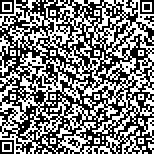| 摘要: |
| 采用核糖体DNA内部转录间隔子1(ITS1)序列初步分析了珠母贝属8个种的亲缘关系。结果表明,ITS1长度范围分布在402–474bp之间,大珠母贝的ITS1序列最长,黑珠母贝的最短。作为外群的企鹅珍珠贝ITS1长385bp。系统发育分析表明,所研究种类聚合成3个类群。类群I包括合浦珠母贝Pinctada fucata和覆瓦珠母贝P. imbricata。类群II包括白珠母贝P. albina、黑珠母贝P. nigra、长耳珠母贝P. chemnitzi和射肋珠母贝P. radiata,其中前2个种聚合成1枝,后两个种聚合成另一枝,分别形成两个亚群类群IIA和类群IIB。类群III包括珠母贝P. margaritifera和大珠母贝P. maxima。类群IIA与类群IIB之间、类群III的大珠母贝与珠母贝之间的遗传距离较近(0.080–0.100),类群I与类群II之间遗传距离较远(0.250–0.270),类群III与类群I和类群II之间的遗传距离最大(0.400–0.570)。类群I中我国的P. fucata和澳大利亚的P. imbricata之间遗传距离很小(0.000–0.013),而两者的种内遗传距离分别为0.002–0.013和0.005, 种内与种间遗传距离相重叠, 表明P. fucata 和P. imbricata 应为同种。类群IIA的P. albina 与P. nigra 之间的遗传距离为0.013, 可能为两个亚种。类群IIB 中的P. radiata 与P. chemnitzi之间的遗传距离只有0.005-0.007, 而本研究的P. chemnitzi的ITS 1序列与GenBank中的P. chemnitzi的ITS 1序列高度一致, 表明P. radiata的鉴别可能有误。 |
| 关键词: 珠母贝属 内部转录间隔子 系统发育分析 亲缘关系 |
| DOI: |
| 分类号: |
| 基金项目:国家“863”重大项目,2002AA603022号;广东省科技计划项目,2002B2150101号;广东省自然科学基金项目,037148号。 |
附件 |
|
| PRELIMINARY ANALYSIS ON GENETIC RELATIONSHIP OF COMMON PEARL OYSTERS OF PINCTADA IN CHINA |
|
YU Da-Hui,CHU Ka-Hou,JIA Xiao-Ping
|
|
1.The South China Sea Fisheries Research Institute, Chinese Academy of Fishery Sciences, Guangzhou, 510300;2.Department of Biology, The Chinese University of Hong Kong, Shatin, Hong Kong
|
| Abstract: |
| Genetic relationship among common pearl oysters of Pincata was addressed using the first internal transcribed spacer (ITS 1) of rDNA sequence. The sizes of ITS 1 range from 402 to 405bp with that of P. maxima being the longest and that of P. nigra being the shortest. The ITS 1 of outgroup Pteria penguin is 385bp long. Using Pteria penguin as outgroup phylogenetic analysis indicated that the pearl oyster species are clustered into three groups. Group I includes P. fucata and P. imbricata. Group II includes P. albina, P. nigra, P. chemnitzi and P. radiata, among which the former two and latter two species form 2 distinct subgroups, Group IIA and IIB. Group III includes P. margaritifera and P. maxima. Among them, the genetic distances between Group IIA and Group IIB, and between P. maxima and P. margaritifera with in Group III are shorter (0.080–0.100) as compared with that between Group I and Group II (0.250–0.270) whereas the genetic distance between Group III and the other two groups is the longest (0.400–0.570), suggesting that species within groups are more closely related than species among groups or subgroups. The interspecific (0.000–0.013) and intraspecific genetic distances for Chinese P. fucata (0.002–0.013) and Australian P. imbricata (0.005) within Group I are overlapped and very small, suggesting that they are likely to be conspecific. In addition, the small genetic distance between P. albina and P. nigra (0.013) suggests that they appear to be subspecies with the main difference in shell color. As for P. chemnitzi and P. radiata, they also appear to be conspecific with small genetic distance of 0.005–0.007 between them. The sequence of P. chemnitzi revealed in this study is consistent with that of P. chemnitzi in GenBank (AY144600), implying that our P. chemnitzi sample is correctly identified. Therefore, this suggests that the P. radiata sample with ITS 1 sequence registered in GenBank (AY144603) may be misidentified. |
| Key words: Pinctada, ITS 1, Phylogenetic analysis, Genetic relationships |
